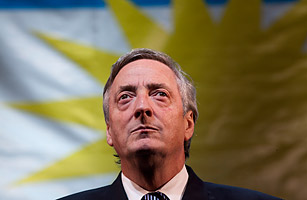
When Néstor Kirchner, who died Oct. 27 at 60, became President of Argentina in 2003, the country's economy, one of Latin America's largest, was in free fall. Amid the often violent chaos, the nation had tangoed through five Presidents in less than 17 months. Kirchner, a little-known provincial governor from Patagonia, deployed a mix of Peronist populism and fiscal discipline that stabilized the crisis and produced some of the region's highest levels of growth during his four years in the Casa Rosada. Though Kirchner, who distanced Argentina from Washington, could be a combative and sometimes authoritarian leftist, his "heterodox" model — one he hoped would yield "globalization that works for everyone" — has enjoyed success in Brazil and elsewhere in South America. Kirchner stepped aside in 2007 so his wife Cristina Fernández could run for President. (She won.) But he remained Argentina's most powerful politician and was widely expected to run again next year, part of what fans and foes alike called the couple's "shared presidency."
—Tim Padgett
This text originally appeared in the Nov. 8, 2010 issue of TIME Magazine.